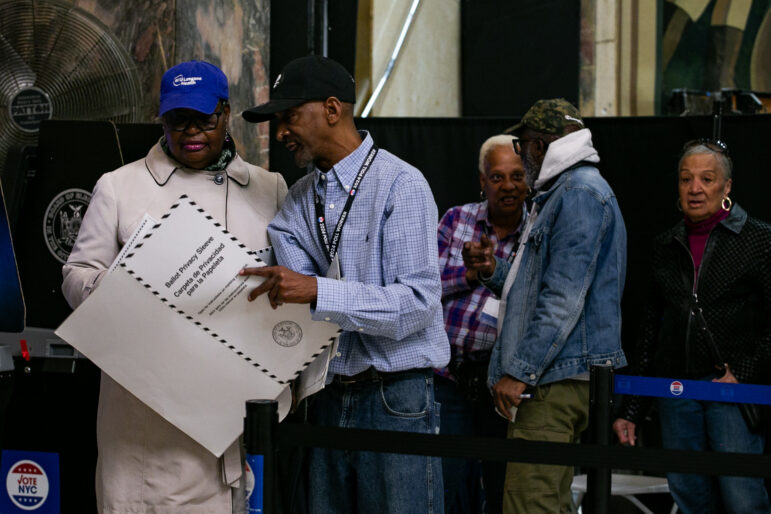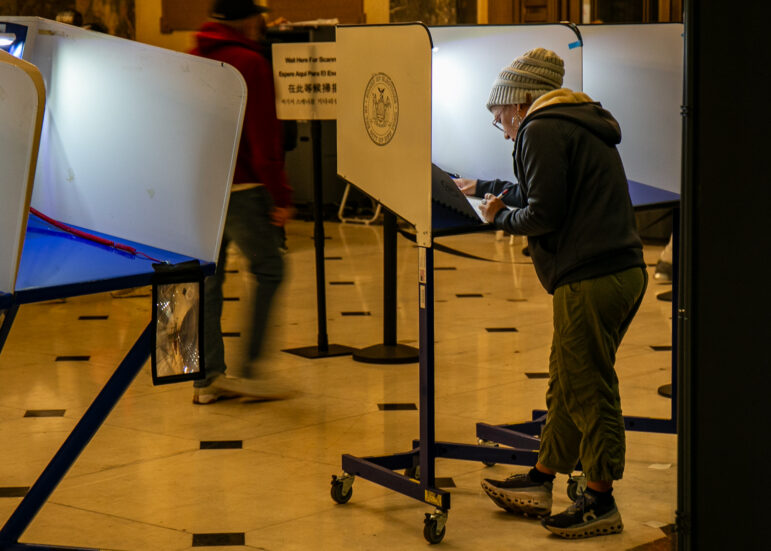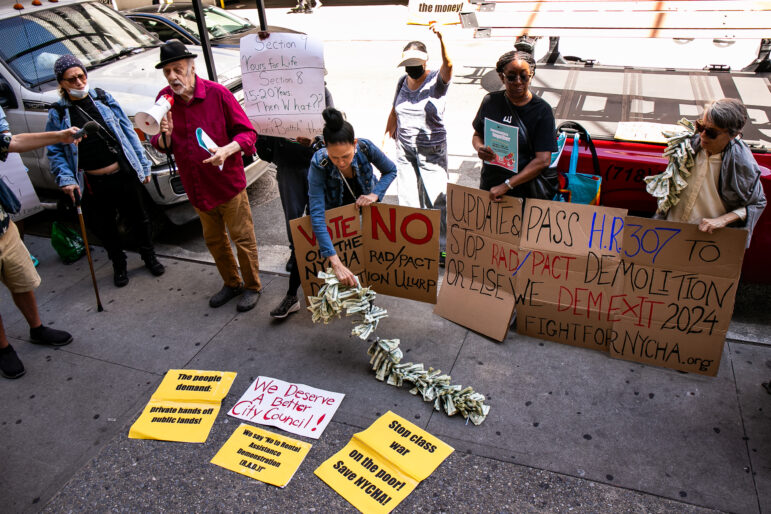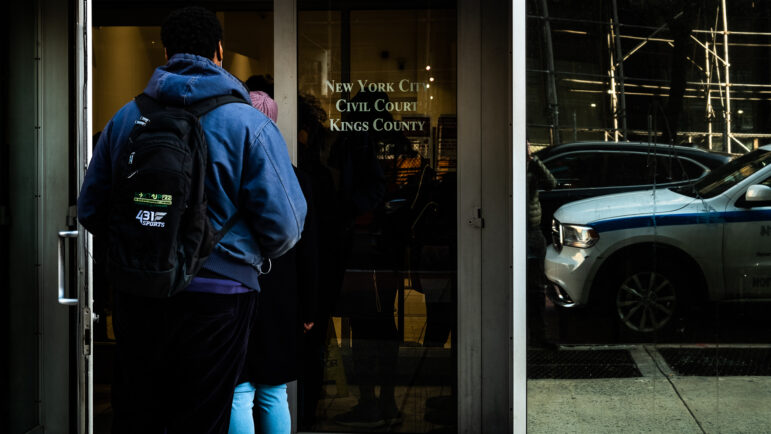
President Obama's Office of Urban Policy has registered a low profile. But regional planning efforts underway at federal agencies could have a big impact.
In the 2008 presidential campaign Barack Obama said great things about cities. And cities did great things for him.
More than a year before Election Day the then-senator pledged to appoint “a new director of Urban Policy who will cut through the disorganized bureaucracy that currently exists and report directly to me.” A year later and a few weeks before he accepted the Democratic nomination, Obama told the U.S. Conference of Mayors in Miami that “the truth is, what our cities need isn’t just a partner. What you need is a partner who knows that the old ways of looking at our cities just won’t do; who knows that our nation and our cities are undergoing a historic transformation.”
When the balloting was over, Obama had won 63 percent of urban voters to John McCain’s 35 percent, a solid gain over John Kerry’s 54-45 urban advantage versus President Bush. Indeed, the nation’s 50 largest cities comprise 16 percent of the U.S. population, but 86 percent of Obama’s popular vote margin came from the counties containing those cities.
With his political roots in Chicago’s South Side, Obama had the most urban pedigree of any president since one-time New York City police commissioner Theodore Roosevelt. And unlike earlier discussions of cities on the national stage, Obama’s focus was as much on planning as on programs. “We need to promote strong cities as the backbone of regional growth,” Obama said on the campaign trail. “And yet, Washington remains trapped in an earlier era, wedded to an outdated ‘urban’ agenda that focuses exclusively on the problems in our cities, and ignores our growing metro areas; an agenda that confuses anti-poverty policy with a metropolitan strategy, and ends up hurting both. “
He added: “Now is not the time for small plans. Now is the time for bold action to rebuild and renew America.”
As City Limits has reported, there is a push for New York comprehensive planning for its future. Quietly, the White House is making a similar push nationwide. Very quietly.
High hopes, low profile
A month after Inauguration Day, Obama made good on his promise to create a White House Office of Urban Affairs, naming as its director Bronx Borough President Adolfo Carrion, a former urban planner. The president’s executive order directed the office “to coordinate all aspects of urban policy.” Carrion went on a national listening tour to learn about “best practices” already being used in nine cities that he visited from July 2009 to that December. In Philadelphia, the visit highlighted the Fresh Food Financing Initiative that brings healthy produce to underserved areas. Out in Flagstaff, Carrion toured the Northern Arizona Center for Emerging Technologies, a business incubator.
In August 2009, Carrion joined other White House officials in a memo to all federal agencies calling for a “place-based review” of federal policies. This called on the departments to evaluate all their policies and find the ones that have a specific impact on particular places—for instance, a program that supports local workforce development—and develop ways to measure success, learn more about why the program works or doesn’t, and team up with other agencies operating in the same places.
The review reflected a totally new way of thinking about federal policy, which has always been top-down and one-size-fits-all. In one change to place-based policy, the administration eased rules on locating federally insured housing on remediated brownfields.
But the listening tour and place-based review—and the behind-the-scenes work Carrion said he did coordinating 17 agencies that touch federal policy—didn’t garner headlines, which was part of what urban advocates hoped the White House office would do: elevate the urban agenda. “They’ve definitely been working behind the scenes, but they are a very small office in a vast, vast bureaucracy,” says Harry Moroz, the Drum Major Institute’s senior advisor on federal urban policy. “I thought the office would do more in public to generate momentum behind a broader kind of urban agenda. That hasn’t happened.”
Carrion announced last March that he was leaving the White House after about a year in the Urban Affairs post to become the Department of Housing and Urban Development’s New York/New Jersey regional director. The White House office still exists, with two employees, and no one named to take Carrion’s place as director.
The fact is, the Office is only a small part of the urban policy story in the Obama administration. As has always been the case, that policy is being driven by the federal agencies—but as Obama envisioned on the campaign trail, these departments are working in concert with each other and local leaders more than before.
An emphasis on planning
Some of Obama’s urban agenda went unheralded because it was tucked into the federal stimulus bill, particularly in the form of infrastructure improvements under the TIGER program. Aiding cities within the context of a broad $814 billion spending plan may have been unsatisfying to urban advocates who wanted a Marshall Plan for cities, but it was an easier political lift than approaching urban areas separately. “I think they saw an opportunity to fold some of these things in,” Moroz says of the administration. “That was looking down the road and seeing that some of these things might be tough to get done on their own.”
Now other, more ambitious and distinctly urban programs are getting underway. Under the umbrella of Obama’s Neighborhood Revitalization Initiative, there is HUD’s Choice Neighborhoods housing program, the Department of Education’s Promise Neighborhoods antipoverty program, a crime prevention initiative run by the Justice Department and health clinics and mental health support coordinated by Health and Human Services. A separate initiative aims at developing “regional innovation clusters” that build off a metro area’s natural strengths to make them better places to work and live; the departments of Commerce, Labor and Education and Small Business Administration are in on that.
The Partnership for Sustainable Communities, meanwhile, links HUD, the Department of Transportation and the Environmental Protection Agency. The partnership is as logical—one agency does housing, another builds transit that the housing should be near and the third aims to protect the environment that housing and transit both impact—it marks a break from the policy “silos” that usually separate federal agencies and their turfs.
“Ultimately, this approach will make communities more prosperous by making them more attractive places for businesses to locate and for young people to remain or move to,” the agencies reported in a round-up of their first year in partnership. “Sustainable communities allow people to live closer to jobs and save money on personal transportation, usually the second largest household expense and sometimes the largest for low-income Americans. Neighborhoods that make it easy to walk or bike to work, school, stores, parks, and other destinations help people stay healthy by incorporating regular exercise into their daily routines. Sustainable communities also reduce air and water pollution and protect treasured landscapes and prime agricultural land.”
And like the place-based review of existing federal programs, it aims to get more for the federal buck. With deficit hawks lusting after deep spending cuts, there’s a premium on combining programs in a way that compounds their impact.
From the “Windy City” to the “Land of Sky”
In October, the partnership announced two mass funding awards encompassing $166 million and 107 communities.
DOT’s stake in the funding backed capital improvements and planning to create transit that improves travel efficiency as well as quality of life in the areas traversed. HUD’s share of the money is intended to “ support state, local and tribal governments, as well as metropolitan planning organizations, in the development and execution of regional plans that integrate affordable housing with neighboring retail and business development.
One recipient of HUD money, the Manhattan-based Regional Plan Association, is working with a consortium of governments from southern Connecticut, Westchester, Long Island and the city to develop a Housing Incentive Fund to get more development near transit centers, especially along the Metro-North rail line and Interstate 287 and run a strategic planning process for girding New York City to the effects of climate change. It also plans a workforce housing project in Long Island and a neighborhood planning initiative in East New York. RPA received $3.5 million, somewhat less than they requested. A spokeswoman says the consortium is discussing how to scale their plans to match the money.
Chicago’s Metropolitan Agency for Planning received $4.25 million to implement “GO TO 2040,” a comprehensive plan linking housing, transit and economic development. The Agency says the money will allow it to carry out specific, small-scale projects that could then be replicated elsewhere in the region.
In Kansas City, the Mid-America Regional Council was awarded funding to carry out a plan 10 years in the making to create a region-wide housing capacity system that would allow decisions on where and how to house people to consider broader demands and wider supply than could be contemplated by looking at just one city or town. Indeed, many of the planning efforts that HUD is supporting already have a broad plan in place—there just needs to be some muscle put behind getting into specifics and implementation.
For instance, the Puget Sound Regional Council, has a Vision 2040 plan, and the region is soon to build a new regional transit system, so the HUD money is supposed to help PSRC capitalize on the transportation investment to get sound housing and economic development done.
In some cases—like the proposal by the Des Moines Are Metropolitan Planning Organization—the HUD money will help fuse together separate plans concocted by different agencies that have suffered from their lack of coordination.
Plans? Check. Action?
Some of the proposals are a little vague, but that’s the point: the HUD money is supposed to encourage the next stage in planning. And in some cases specifics are impossible because the public has not been consulted yet on what it wants.
“We’re going to try to have really unprecedented public involvement throughout the project,” says Carrie Runser-Turner, senior planner at the Land-of-Sky Regional Council in Western North Carolina, who didn’t want to get into specifics about what the ultimate plan might contain. “We want to make sure we’re not going into it with preconceived notions. We want it to be a living document that doesn’t just stay on the shelf—something that’s relevant and can be updated.”
The goal, Runser-Turner says, is to end up with more than just a plan. “We want to have tangible projects that can be implemented on a variety of scales.”.
Indeed, planning can seem fairly abstract, so for Obama’s urban policy to win political favor—and funding—tangible projects will be key.
But getting things done, even with the Obama administration’s funding of local planning, is never easy, as Lyle Wray can tell you. Wray’s the executive director of the Capitol Region Council of Governments in Connecticut, recipients of $4.2 million in the October round. CRCOG plans a raft of initiatives—incentives for creating density near transit, sustainability training for local zoning commissioners, studying where to put bus lines so they tie housing and jobs together.
It also wants to build upon an existing Knowledge Corridor linking the college-rich areas of central Connecticut and western Massachusetts. The Corridor pitches the region to employers who might locate there, and collaborates on workforce development.
But a linchpin of the CRCOG plan is a busway between Hartford and New Britain, a small city 9 miles from the capitol. The plan aims to speed commutes along car-choked Interstate 84 by creating a separate channel for buses.
After at least 12 years of intermittent talk about the idea, the state is poised to go ahead with the idea. If it were built, Wray says, it would afford a rare chance for transit-oriented development in the region.
But a rising price-tag has revived opponents of the busway. Summing up the threat to all of Obama’s urban agenda, Wray sizes up the odds facing big ideas: “The political and financial environment is not very friendly.”








